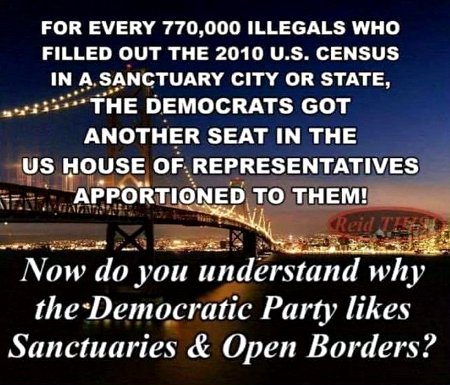 In many ways, due to America’s sheer size and population, the nation resembles an empire nearly so much as it does a traditional nation state. That’s not surprising, as each of the different regions have their own cultures and their own economic idiosyncrasies.
In many ways, due to America’s sheer size and population, the nation resembles an empire nearly so much as it does a traditional nation state. That’s not surprising, as each of the different regions have their own cultures and their own economic idiosyncrasies.
What’s interesting is how these joined yet disparate regions are currently fairing.
Forbes magazine has broke the US down into seven distinct regions in their article, “A Map Of America’s Future: Where Growth Will Be Over The Next Decade.” They even went so far as to describe these regions as separate nations.
One thing becomes clear upon researching this article – Both economic and population growth in these regions has a direct correlation with their overall political allegiances. Each region may have it’s own tastes, proclivities, resources and problems but their success or failure seems to break down into which ones are Conservative (RED) and which ones are Liberal (BLUE).
The Inland West
Allegiance: RED
Status: Growing
Over the past decade this region has enjoyed nearly 8% job growth, the strongest in the country, with the highest rate of STEM growth in the nation over the past decade. It has also enjoyed the most rapid population growth in the nation at 21%. Sadly, the western reaches of this region – the inland parts of Washington, Oregon and California – have not done as well due to being resource- and manufacturing-oriented economies within highly regulated, high-tax “blue states.â€
The Great Plains
Allegiance: RED
Status: Growing
In the last decade, no region in America has displayed greater economic growth . Since the 2008 recession, it has posted the second-fastest job growth rate in the U.S., after the Inland West, and last year it led the country in employment growth. Its population growth rate has been 14% over the past 10 years, a rate which is 40% above the national average, and is expected to expand a further 6% by 2023.
The Third Coast
Allegiance: RED
Status: Growing
Since 2001, its job base has expanded 7%, and it is projected to grow another 18% the coming decade. The population is also growing, both natural and through domestic immigration from other economic regions.
The Southeast Manufacturing Belt
Allegiance: RED
Status: Growing
The region is attracting large-scale investment from manufacturers from Germany, Japan, and South Korea and seeing a resultant financial boom. Both due to birth rates and the migration of families, including immigrants, the population growth has been more than twice as fast since 2001 as in the Northeast, a trend that is projected continue in the next decade.
The Great Northeast
Allegiance: BLUE
Status: Shrinking
The region is financial strong, even today but the population is falling due to sustained domestic out-migration and the fact that it is the most child-free region outside the retirement hub of south Florida.
The Great Lakes
Allegiance: BLUE
Status: Shrinking
The region lost approx. 1,00,000 manufacturing jobs over the past 10 years, making it the only one of the seven economic regions to lose jobs overall during that period, though the pace of job loss has slowed. It’s population is dwindling, with few people moving to the region and even fewer children being born.
The Left Coast
Allegiance: BLUE
Status: Shrinking
Financially limited but strong, this region boasts the highest percentage of workers in STEM professions – more than 50% above the national average – and the largest share of engineers in its workforce; however, high housing prices and density-centric land use policies are keeping people out of the region. As a result the population is falling rapidly.
The results are almost disturbingly consistent. The four Conservative region are all experiencing economic and population growth, whereas each of the three Liberal regions are experiencing declining numbers. In both cases these a trends that are expected to continue and, possibly, accelerate over the next decade.
Given these numbers, the 2020 census may see a significant re-apportioning of both the members of the House of Representatives and the electoral votes among the 50 states. In both cases these changes would benefit Conservatives and damage Liberals.
Simply put, if this trend continues as expected and other variables don’t come into play, America can look forward to a bright, red future.
Like this:
Like Loading...
Tags: America | Census | Conservatives | Economics | Economy | Forbes | Jobs | Liberals | Politics | Population Growth | Society
This entry was posted on Friday, September 13th, 2013 at 3:23 am and is filed under Politics, Society.
You can skip to the end and leave a response. Pinging is currently not allowed.


 In many ways, due to America’s sheer size and population, the nation resembles an empire nearly so much as it does a traditional nation state. That’s not surprising, as each of the different regions have their own cultures and their own economic idiosyncrasies.
In many ways, due to America’s sheer size and population, the nation resembles an empire nearly so much as it does a traditional nation state. That’s not surprising, as each of the different regions have their own cultures and their own economic idiosyncrasies.
